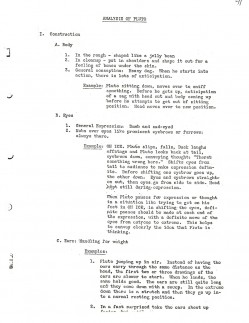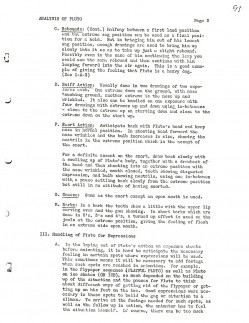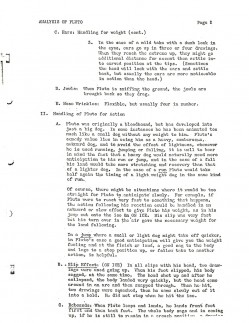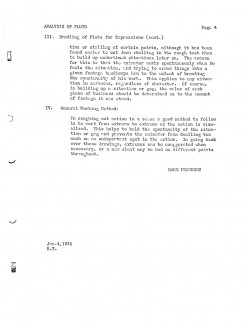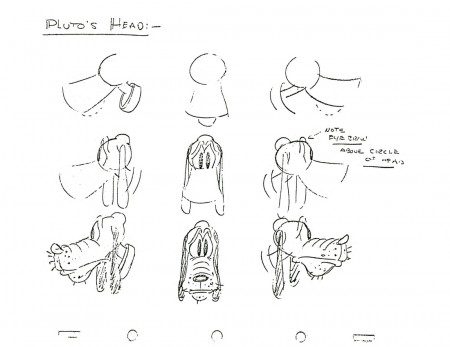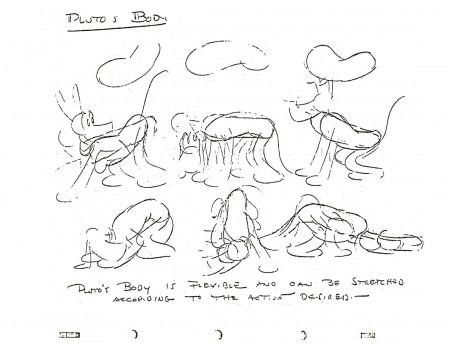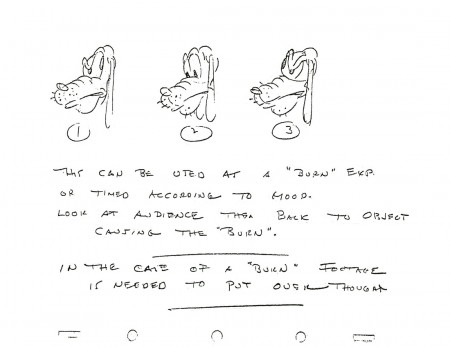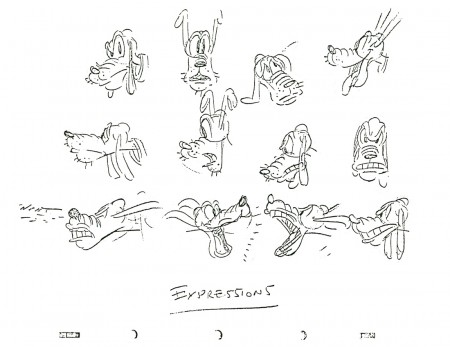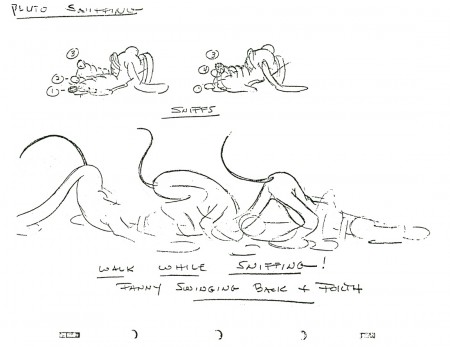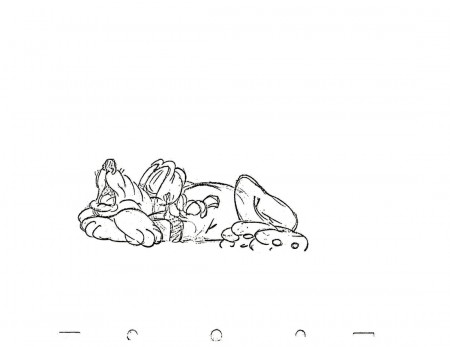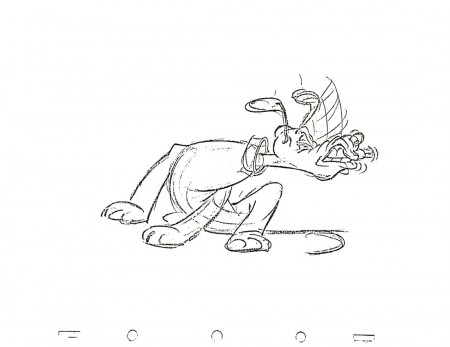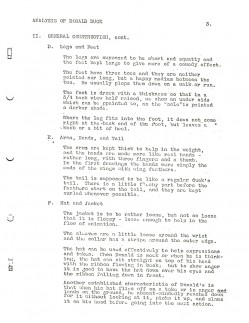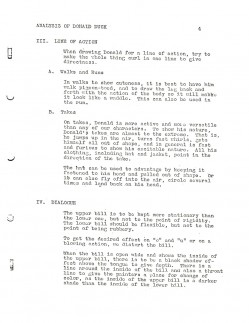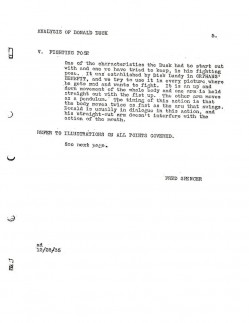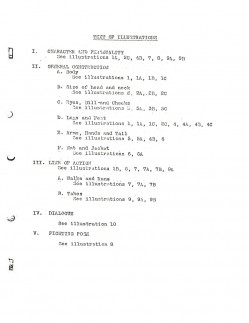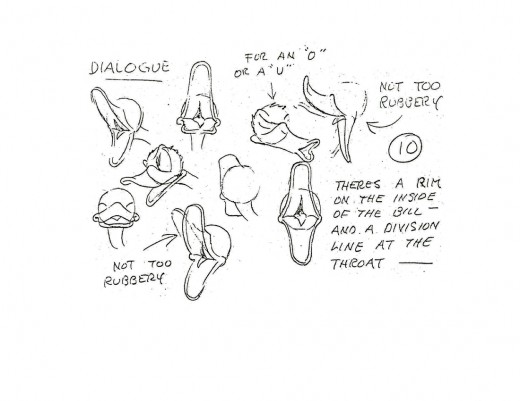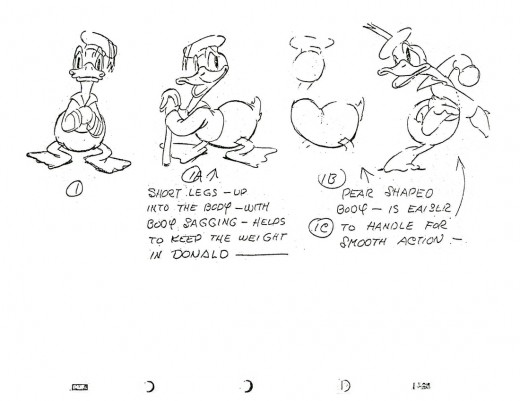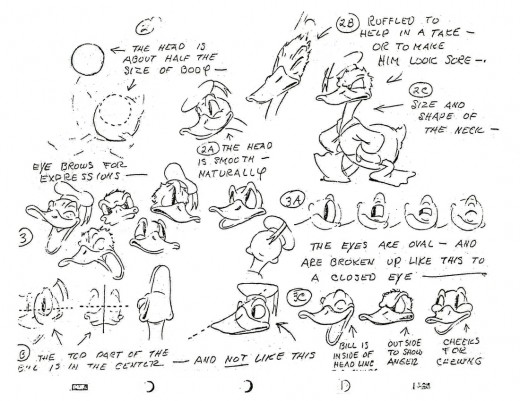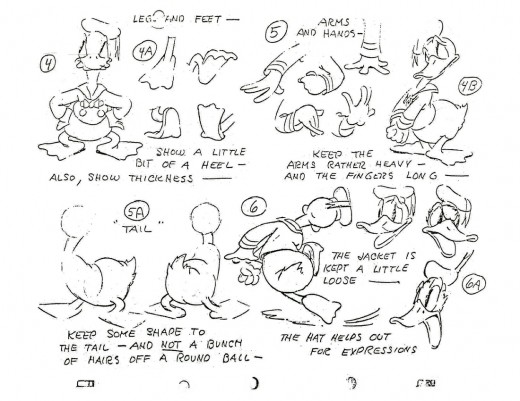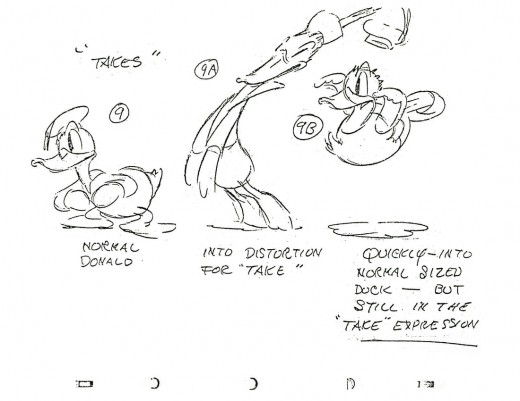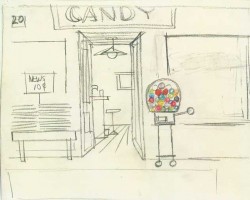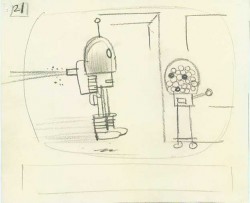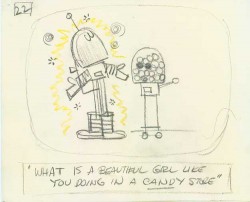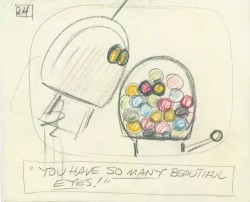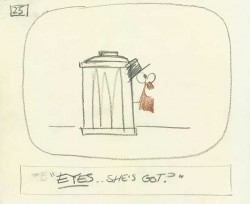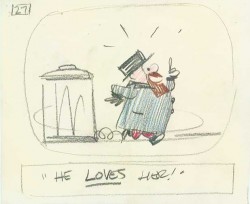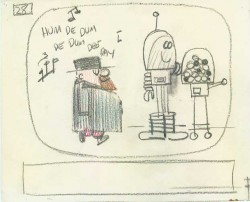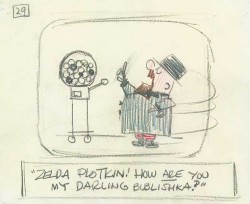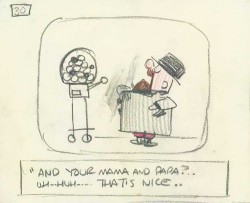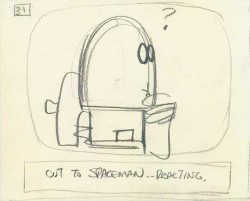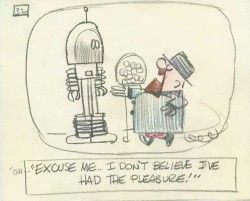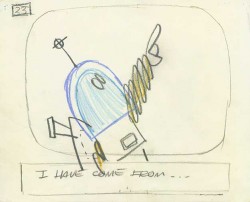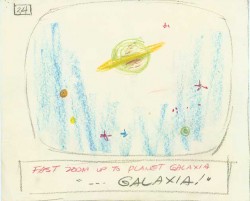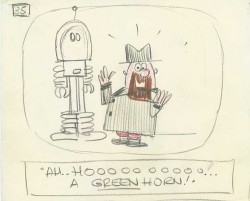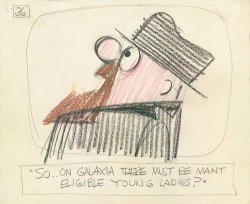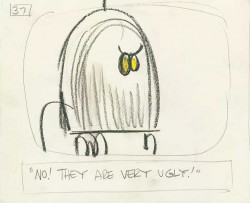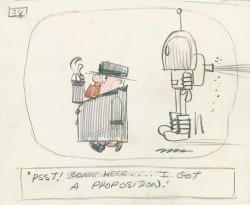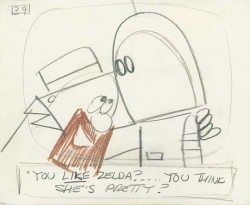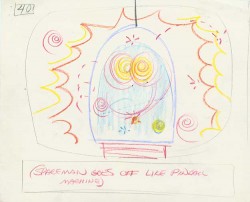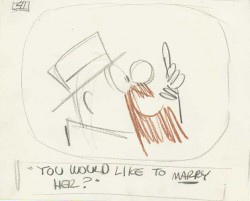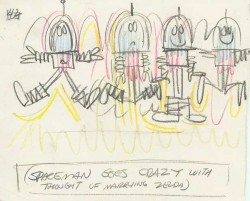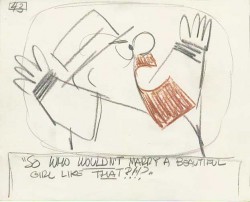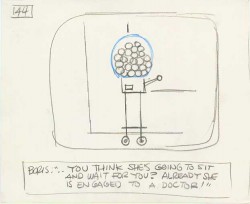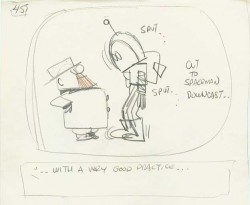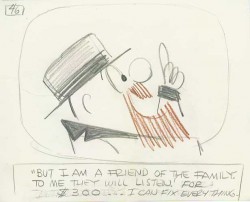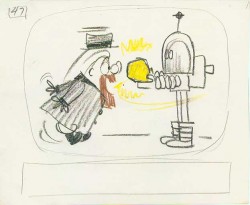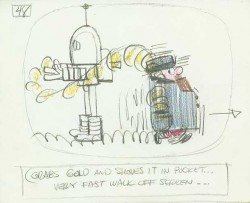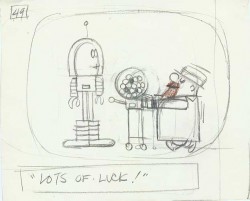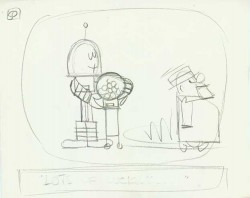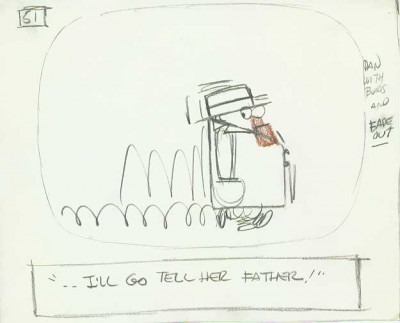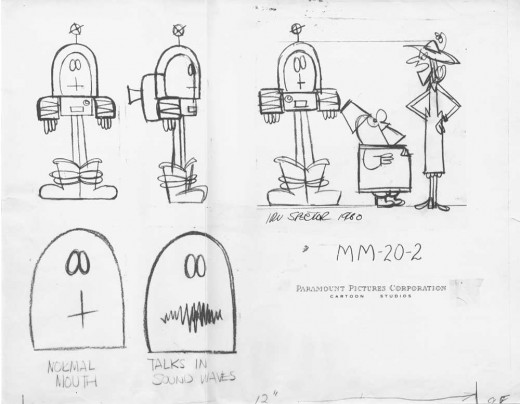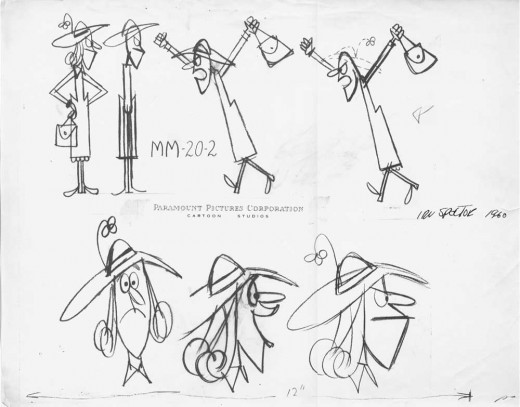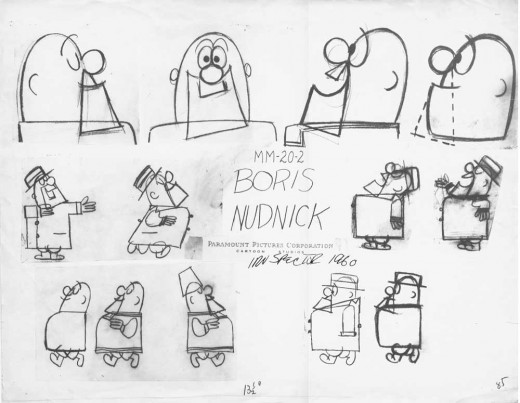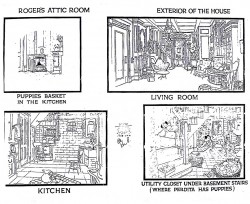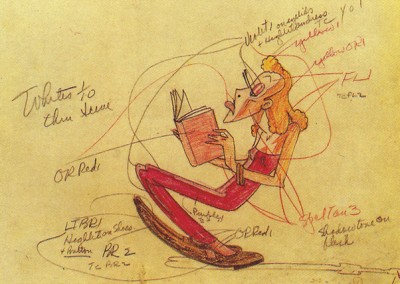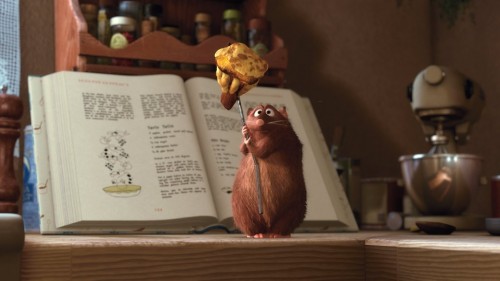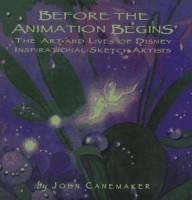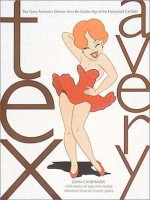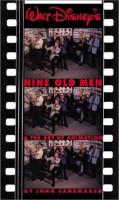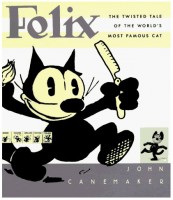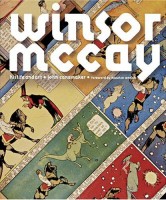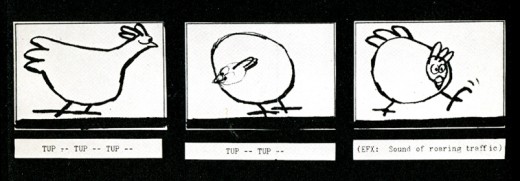Search ResultsFor "disney model sheets"
Animation Artifacts &Articles on Animation &Disney 29 Jul 2009 07:47 am
Pluto models
 - When I posted the Goofy model notes I thought that I’d finished posting all that I had. Well I’ve just come up with this series of excellent lecture notes on drawing Pluto and his character. Ted Sears leads us to Norm Ferguson, who was the promary speaker for this lecture given to the Disney animation group back in 1936. They gave up drawing these characters so beautifully way back in the Thirties.
- When I posted the Goofy model notes I thought that I’d finished posting all that I had. Well I’ve just come up with this series of excellent lecture notes on drawing Pluto and his character. Ted Sears leads us to Norm Ferguson, who was the promary speaker for this lecture given to the Disney animation group back in 1936. They gave up drawing these characters so beautifully way back in the Thirties.
These finish off the character analysis lecture notes I have. You can find those for Mickey, Donald and Goofy elsewhere on this blog.
An edited form of these notes were published in Frank Thomas & Ollie Johnston‘s The Illusion of Life.
Here are the Pluto notes:
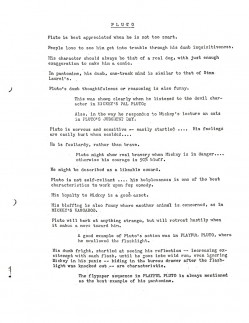 1
1 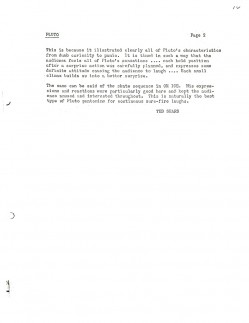 2
2(Click any image to enlarge.)
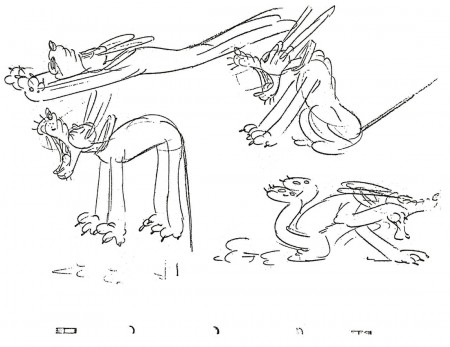 5
5
These drawings just never made it to the How to Draw Pluto
book that they sold at Disneyland in the Fifties.
Too much raw life and funny pictures.
All that’s left is for me to post the How to Draw Mickey and How to Draw Donald books from the Art Center at Disneyland. Next week.
Animation &Animation Artifacts &Articles on Animation &Disney &Models 13 Jul 2009 07:31 am
Donald Models
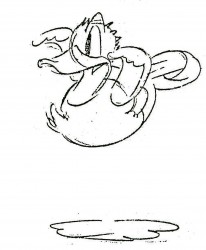 - A few weeks ago I posted the handout sheets that were given at Disney’s in 1938 to advise people on how to draw Mickey. The same was done for Donald, Goofy and Pluto.
- A few weeks ago I posted the handout sheets that were given at Disney’s in 1938 to advise people on how to draw Mickey. The same was done for Donald, Goofy and Pluto.
Here are the notes from the Fred Spencer class analyzing Donald Duck. There’s a lot here that even the Disney studio sees to have forgotten about the Duck. He’s a brilliant and unique character, and he hasn’t been done as well as he was drawn in the 30s.
These same notes appeared in a synthesized and cleaned-up form in Frank Thomas Ollie Johnston’s Illusions of Life. Somehow I prefer the slightly browning mimeo sheets from the studio. (Although mine are just a xerox of same.) These are all worth it for the incredible drawings on the last page.
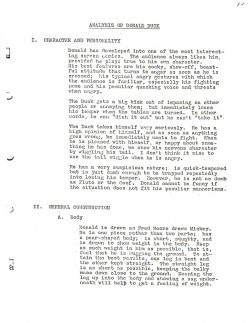 1
1 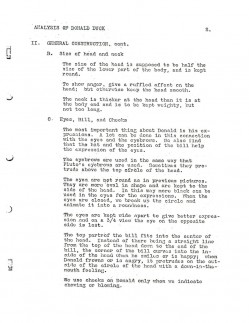 2
2(Click any image to enlarge.)
You can see what the actual pieces look like at Didier Ghez’ Disney History site. He posts two pages courtesy of Gunnar Andreassen.
Animation Artifacts &Story & Storyboards 29 Aug 2008 08:05 am
Galaxia pt.1
- Here is another gem from Paul Spector re the animation work of his talented father,
Irv Spector. It’s a pleasure to present it.
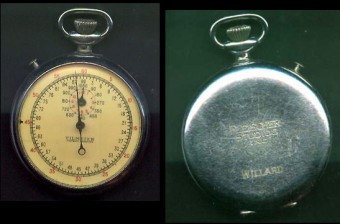 If there were a spot to post my father’s pre-WWII work, confirmed credits, and interesting studio stories, this would be the place.
If there were a spot to post my father’s pre-WWII work, confirmed credits, and interesting studio stories, this would be the place.
Sorry to say, I don’t really have very much in the way of those to offer. My father was one of those unmarried animators, too busy running from the west coast to the east, to hold onto much until after WWII. However, he did seemingly come away with Willard Bowsky’s animation stopwatch.
Born in Oakland, CA in 1914 but growing up in Los Angeles, he was suspended from high school in 1930 for arguing with his art teacher about the correct way to draw a hand holding a gun pointed straight at you. The next day he was at Disney Studios asking for a job, and was actually let in to see Walt himself (helps here to imagine that at 16 my father was about 5’6â€, 130lbs). Walt told him to go back and finish school, and then there would always be job after that at Disney. Instead, he went over to the Mintz Studio and was given employment as a fledgling animator (slight chance this might have been with Lantz at Universal, but he was with Mintz quickly).
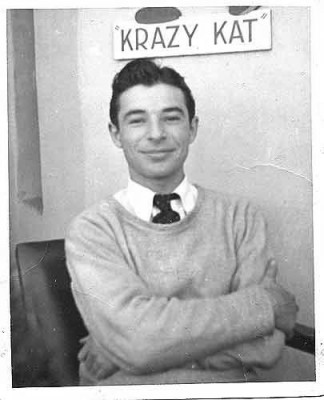
Irv Spector at the Mintz Studio.
There he stayed for several years before moving over to Leon Schlesinger Studios, depicted on their on their Xmas card from the mid 1930s. schlesinger_xmas.jpg , and eventually moved on to Fleischer, starting there not too long before their move to Miami.
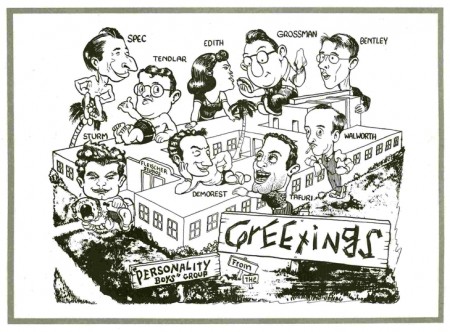
(Scan taken from Leslie Cabarga’s The Fleischer Story.)
From there, it was WWII and the Signal Corps, the subject of a recent post on the Splog.
Since my father had an industry name – and would not likely be the subject of an animation post unless his kid was writing it — most corners of the internet and many books about animation lead the casual observer to believe that from after WWII through the early 1960s he was strictly a Paramount-Famous guy. However, there is a very large body of non-Famous work during this stretch of his career, 95% of that either projected on a screen, aired, or published, could easily fill several posts of their own.
Yet it’s best to get started with something more cohesive. The following is the first of two parts of a complete storyboard, Galaxia, created for Paramount-Famous and released theatrically in 1961. I decided to post it for a few reasons. I don’t really see any complete Famous boards out there, I happen to have it, and I think it is a decent enough example of the difference between how a work is conceived and the way it ends up. It’s available in finished form on the Complete Harveytoons DVD.
Although far from any Famous production that would likely be discussed on an animation blog, I would like to think that this complete storyboard at least has some charm and zippy movement to it — but being so close to it for such a protracted period I’m no longer a good barometer; I can still remember it in total, pinned to the wall of my father’s basement studio. So imagine my surprise when I finally saw the finished product just two years ago! In truth, to me, the DVD Galaxia plays like a bit of a slow bore.
Certainly, it is a long way from the better Famous output many years prior, and most readers here will know the reasons why. Often, when I think about the talent pool that Famous had working for them, many being the same cartoonists whose work for other studios is often revered, I tend to squint a bit and imagine what might have been.
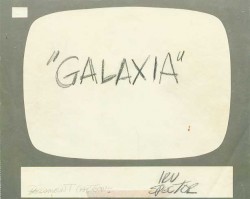

(Click any image on this post to enlarge.)


(Note there dosen’t seem to be a drawing #16.)
Model Sheets
Animation Artifacts &Comic Art &Commentary 16 Aug 2008 07:58 am
Odds and More Ends
Today’s NY Times features a Blog/Article that analyzes all of the Star Wars movies. The author, Chris Suellentrop, says the new video game is “small consolation for the realization that the franchise that dominated their lives for 30 years has ceased to matter.”
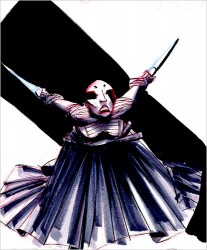 Lucas’ Cloned Wars received one star
Lucas’ Cloned Wars received one star ![]() from all of the NY papers, including the NY Daily News. JOE NEUMAIER says of the film, it’s “chock-full of video game-style action scenes and drawn to resemble the puppets in the 1960s British TV show “Thunderbirds,” is just as wooden as the last few live-action movies…”
from all of the NY papers, including the NY Daily News. JOE NEUMAIER says of the film, it’s “chock-full of video game-style action scenes and drawn to resemble the puppets in the 1960s British TV show “Thunderbirds,” is just as wooden as the last few live-action movies…”
NATHAN LEE in the NY Times says: “it isn’t the most painful movie of the year!”
The NY Times also has a slide show feature of “concept art” from the film (five images.) That’s where I pulled the image to the left.
Newsday‘s RAFER GUZMÃN (AP) says: “the film feels like an unauthorized knock-off, one of those “tribute” shorts that pop up on fan Web sites.”
Apparently this is the pilot for a new series coming to Cartoon Network. It’s obviously part of their push to get more 14 year old boys to watch. I guess it’s a positive that it’s not a live action series for CN. I wonder how long it will be before Lukas clones “Indiana Jones”?
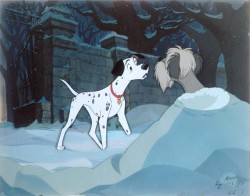 – Mark Mayerson, as you probably know, still continues to post his wonderful Mosaics on 101 Dalmatians and gives the excellent commentary with it. I write this only to remind you to keep up. Mark’s work is an enormous resource that can be too easily taken for granted. I wish he were able to print these up in book form. Perhaps, some day Disney books will realize there’s an excellent publication for grab here. “?
– Mark Mayerson, as you probably know, still continues to post his wonderful Mosaics on 101 Dalmatians and gives the excellent commentary with it. I write this only to remind you to keep up. Mark’s work is an enormous resource that can be too easily taken for granted. I wish he were able to print these up in book form. Perhaps, some day Disney books will realize there’s an excellent publication for grab here. “?
- Robert Cowan‘s art collection includes a cel set-up (above left) that seems to jump right off Mark’s mosaic. How interesting that Mark chose that particular set-up. How great the Cowan collection is; take a look at the site if you’re not familiar with it or if you haven’t been there in a while. You should also look at his Comic Art collection. There, you’ll find everything from Burne Hogarth to George MacManus to Winsor McCay.
- On the Animation Archive site, I found these Bg. plans for 101 Dalmatians. It really defines the layout of the house. In case you don’t know this site, they have dozens of model sheets for viewing. Some are brilliant, some are bad copies, all are worth checking out.
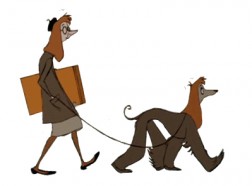
- I received an interesting art link yesterday which displays accredited art colleges to create a comprehensive directory for potential students to browse. Since I’m sure a lot of students check out this blog, I thought it might be a useful link for some readers out there. It’s called FindYourArtSchool.com.
For those considering an education in fields relevant to animation, this may be helpful.
.
Animation Artifacts &Books &Disney &Models &repeated posts 11 Apr 2008 08:07 am
Recap Friday – Celebrity Caricature
- Back in July 2006 I wrote about the art exhibit of celebrity caricature which came from the Library of Congress and was seen in the NY Public Library at 42nd Street. This show still stands out in my mind.
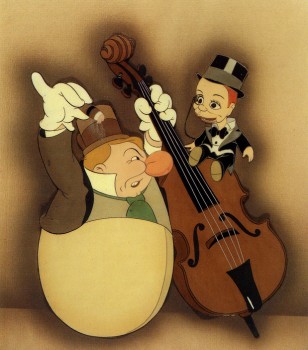 -I’m currently researching the art of Covarrubias. An exhibit at New York’s Public Library at 42nd Street in 1998 was one of the best I’ve ever seen. It was a program of “Celebrity Caricature” mostly from the 20′s & 30′s. Covarrubias, the developing Hirschfield, and a number of other brilliant artists were all represented well. In among the art was a small section on animated caricature. Drawings by Tee Hee and Joe Grant were on display with a couple of cel set-ups. There were also a couple of WB model sheets (without artist names.)
-I’m currently researching the art of Covarrubias. An exhibit at New York’s Public Library at 42nd Street in 1998 was one of the best I’ve ever seen. It was a program of “Celebrity Caricature” mostly from the 20′s & 30′s. Covarrubias, the developing Hirschfield, and a number of other brilliant artists were all represented well. In among the art was a small section on animated caricature. Drawings by Tee Hee and Joe Grant were on display with a couple of cel set-ups. There were also a couple of WB model sheets (without artist names.)
From the book of that exhibit I’m posting some of the animation art represented. Again no animators’ names are given. I remember well
_____(cel – Charlie McCarthy & W.C. Fields in________some beautiful caricatures by Joe
_____“Mother Goose Goes Hollywood”)_____________Grant who came to Disney’s studio to _____________________________________________work on this film.
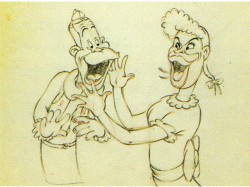
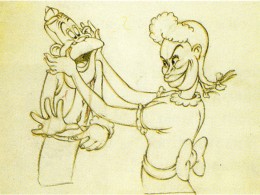
_______________Joe E. Brown and Martha Raye from “Autograph Hound”
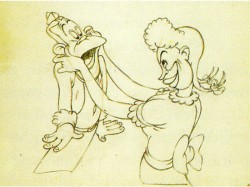
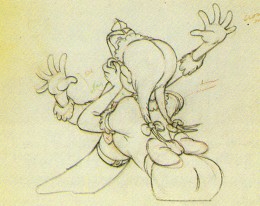
____(Click on any image to enlarge)
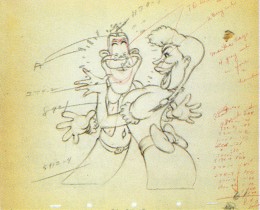
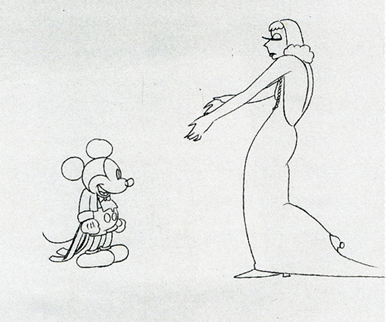
Garbo & Mickey – animation drawing for Mickey’s Gala Premiere
A small sampling of this show can be found on the National Portrait Gallery website. Non-animation caricatures are on view there, and the beautiful book/catalogue can be purchased there.
Credits for the above stills goes to:
1. “Mother Goose Goes Hollywood” from the collection of Jeff & Therese Lotman
2-5. “Autograph Hound” National Portrait Gallery, Wash.D.C.
6. “Mickey’s Gala Premiere” WDFeature Animation Research Library
7. The Steve Schneider Collection
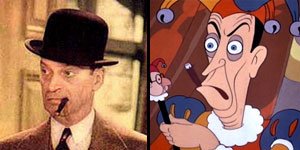
Larry T. on his blog, Random Semiconscious Musings, has a great post on Mother Goose Goes Hollywood wherein he identifies all of the caricatures with matching photographs. It’s great to see the likes of Ned Sparks (pictured), George Arliss and Joe Penner.
Animation Artifacts &Models &repeated posts 28 Mar 2008 08:21 am
Recap Friday: Larry Riley
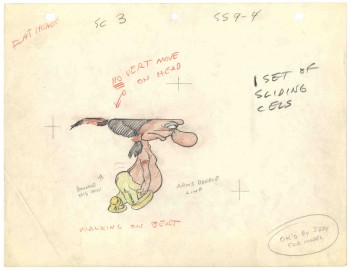 In celebration of the new season of baseball I have a couple of model sheets from a Paramount cartoon.
In celebration of the new season of baseball I have a couple of model sheets from a Paramount cartoon.
A story writer, Larry Riley, gave me these drawings back in 1972, but he never told me the film’s title.
Thanks to Thad Komorowski and Bob Jaques, who left comments on the original post, we know the drawings come from Heap Hep Injuns (1950).
___________(Click images to enlarge.)
Larry Riley was a wild guy. On my first commercial job at Phil Kimmelman & Ass. he and I were the inbetweeners working side-by-side on some of the Multiplication Rock series. Larry had had a long and busy career in animation.
He had been an asst. animator at Fleischer‘s, a story writer at Paramount, an animator at many studios. Like many other older animators, he ended up doing anything – including inbetweening at Kimmelman’s for the salary and the union benefits.
The stories Larry told me kept me laughing from start to finish. There was no doubt he had been a writer for years. In a not very exciting job, it made it a pure pleasure for me to go to work every day to hear those hilarious stories. I can’t see Lucky 7 without thinking of laughing. It wasn’t the stories per se that were funny, it was his take on it.
Larry told me of his years at Fleischer’s in Florida where he was an assistant. He and Ellsworth Barthen shared a room, and, according to Larry, had lined one of the walls of their room with empty vodka bottles. Now, I’ve heard of frats doing this with beer cans, but doing it with vodka bottles requires some serious drinking. One of the many times I got to work with Ellsworth, I asked him about the story, and he reluctantly backed it up telling me what a wild guy Larry was.

________Forgive the racist pictures, but I guess they’re a product of their times.
Larry also told of a 3D process he’d developed for Paramount in the 50′s when the movies were all going 3D. I believe there were two Paramount shorts done in this process: Popeye: The Ace of Space and Casper: Boo Man. Larry offered to give me the camera on which he shot these films – he had it stored in his basement. He was afraid it would get thrown out when he died. I didn’t have room for it.
My regret; I still hear the sadness in Larry’s voice.
(When I originally posted this in 2006, Larry’s grandson, John, wrote to tell me that another collector took possession of the camera and kept it from destruction.)
The animator who drew these is Tom Johnson (he signs the second one), and they were approved by the director Isadore (Izzy) Sparber per the first one.
The drawings are deteriorating, obviously. The pan above uses a lot of glue to hold it together, and that’s eating away at the paper.)
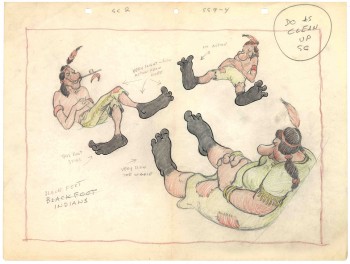 – This is the final model I have from Heap Hep Injuns a 1950 Paramount cartoon. Tom Johnson drew this image, prior to animating it, and Izzy Sparber directed the film. I’d heard some stories about I. Klein regarding this film, though he’s not credited, so I suspect he may have had something to do with model approvals, as well. Actually, he may have been the “Izzy” referred to on the pan posted yesterday.
– This is the final model I have from Heap Hep Injuns a 1950 Paramount cartoon. Tom Johnson drew this image, prior to animating it, and Izzy Sparber directed the film. I’d heard some stories about I. Klein regarding this film, though he’s not credited, so I suspect he may have had something to do with model approvals, as well. Actually, he may have been the “Izzy” referred to on the pan posted yesterday.
(click on image to enlarge.)
I was never a big fan of the Paramount cartoons. Growing up in New York, we’d always get Paramount or Terrytoons shorts playing with features in the theaters. Only rarely did a Warners cartoon or a Disney short show up. (I don’t think I saw a Tom & Jerry cartoon until I was 17 when they started jamming the local TV kidshows with them.)
Saturdays there was always the placard outside the theater advertising “Ten Color Cartoons”. A haughty child, I naturally wanted to know why they didn’t show B&W cartoons – that’s what we saw on television, and I usually liked them more. I must have been insufferable for my siblings to put up with me.
The starburst at the beginning of the Mighty Mouse cartoons always got an enormous cheer in the local theaters. I don’t remember ever hearing that for Popeye or Harveytoons.
Books &Commentary 27 Jun 2007 07:49 am
NIMH, Bart, Ghibli & other feature thoughts
- First up, in case you haven’t seen this letter, I suggest you check it out. A rejection letter from the Disney studios, 1938.
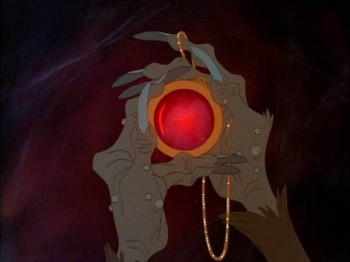 – Monday night The Secret of NIMH aired on cable television. Somehow, even though I own copies of this film on dvd and video, I hadn’t seen it since it opened in theaters. Watching it again, after all these years, I found that not much had changed. 25 years didn’t hurt or help.
– Monday night The Secret of NIMH aired on cable television. Somehow, even though I own copies of this film on dvd and video, I hadn’t seen it since it opened in theaters. Watching it again, after all these years, I found that not much had changed. 25 years didn’t hurt or help.
I have to admit that I was kinder to it for the nostalgia of the piece. The wave of enthusiasm I felt for the “renegades,” who pulled the film together despite the odds of the period working against them, was high.
The film still has that mediocre ending. It’s such a romantic conclusion that it’s almost difficult to watch; magic overcomes everything in this world of Bluth.
Also, I’ve never quite understood the eyes of anyone in the film who’s supposed to be old (and I guess wise) – they just glow so there’re really no eyes there. Somehow the gimmick is corny.
At times the film is so densely colored, but then at other times it’s flat. This flips back and forth from scene to scene. However, this I forgive for a film that was obviously done for a low budget and with a lot of heart.
That Jerry Goldsmith score almost makes the film and all its negatives brilliant. And the voice of Elizabeth Hartman as Mrs. B(F)risby is inspired. It’s quite unique and quirky. This is one of her best performances, and she had many of them.
In the end, I’m glad to have watched it again, but it’s unlikely I’ll rush to view it again in the next few weeks.
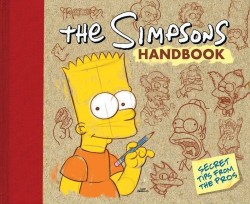 – The NYPost printed a big illustrated review of The Simpson’s Handbook, a new book designed to show you how to draw the characters of The Simpsons. The credited author is Matt Groening.
– The NYPost printed a big illustrated review of The Simpson’s Handbook, a new book designed to show you how to draw the characters of The Simpsons. The credited author is Matt Groening.
The book appears to print model sheets reworked for the general public. Otherwise it seems to be somewhat similar to those Disney How to draw Mickey (or Donald or Goofy or Pluto) books you could get at Disneyland in the 60′s.
The on-line version of the review doesn’t include all those that appeared in the newspaper; some of the illustrations from the book were printed. The images looked interesting though the Post tried to make it look like a fun-for-kids book. I’ll have to check it out when I’m in a book store.
I guess they’re starting to gear up the publicity machine behind the Simpsons feature film about to be released.
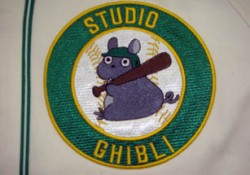 – Daniel Thomas MacInnes hosts an excellent site called Conversations on Ghibli. There, naturally, you’ll find an enormous amount of information on Ghibli, the studio that hosts Miyazaki and his films.
– Daniel Thomas MacInnes hosts an excellent site called Conversations on Ghibli. There, naturally, you’ll find an enormous amount of information on Ghibli, the studio that hosts Miyazaki and his films.
Not only does Daniel Thomas offer extensive current information about the films, but he also posts many, many videos.
Currently there are a number of short films to view on the site. Go there and just start watching.
Three I found breathtaking are:
……..a Yurij Norstein ad: here
……..Miyazaji’s Sky Colored Seed: here
……..Yoshiyuki Momose’s ads for House Foods: here
For those of you who haven’t seen this insurance ad by Sylvain Chomet, maybe it’ll help keep you on hold until his next film appears. It’s already been four years since The Triplettes of Belleville. Making features is a tough business.
- I assume many of you have read Jim Hill‘s article on the potential box office draw for Ratoutille (Rat-a-too-ee). The article sounds like good business sense even if it isn’t the tale we’d all like to hear. I assume we’ll all know the answer by this time next week.
Rants against this article appear at Tom Sito‘s site and at the Animation Guild Blog and at Josh Tyler’s Cinema Blend.
Michael Barrier has a positive review of the film worth reading.
Animation Artifacts 09 Jun 2007 08:54 am
Rico LeBrun model sheets
LeBrun did many drawings and studies for Bambi’s animators.
A few months ago I bought a model sheet from Bambi which he had drawn. It analyzed a deer’s skeletal system for the animators. Here’s the model sheet posted below.
I’m also posting another that LeBrun did which was printed in Robert Feild‘s 1940 book, The Art of Walt Disney.
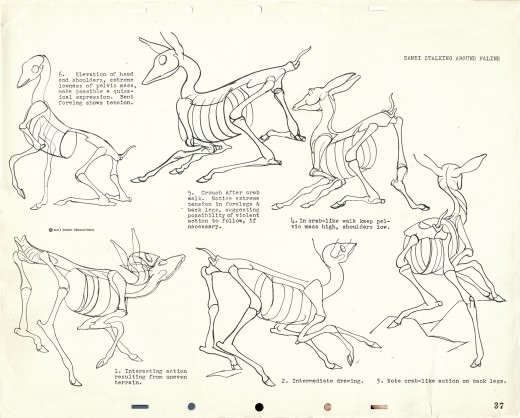
The Rico LeBrun model sheet printed onto a 16 field sheet of Disney animation paper.
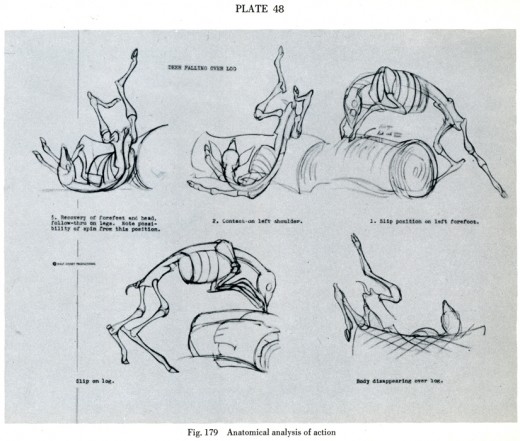
The Rico LeBrun model sheet that was published in the Robert Feild book.
(Click either image to enlarge.)
Books &Trnka 07 May 2007 08:13 am
Animation Bio Books
 – Before talking about animation books, let me congratulate the winners at last night’s ASIFA East awards. Don Hertzfeld, Patrick Smith, Nina Paley, Bruce Knapp and all of the other winners should feel proud of their work. Three cheers also for ASIFA East President David Levy, who did another excellent job of moderating the proceedings. My only complaint is that it’d be nice to see the food you eat; the party is too dark. Better than last year , but more lights, please.
– Before talking about animation books, let me congratulate the winners at last night’s ASIFA East awards. Don Hertzfeld, Patrick Smith, Nina Paley, Bruce Knapp and all of the other winners should feel proud of their work. Three cheers also for ASIFA East President David Levy, who did another excellent job of moderating the proceedings. My only complaint is that it’d be nice to see the food you eat; the party is too dark. Better than last year , but more lights, please.
The ASIFA East website will have a complete list of winners today.
- Continuing my thoughts on all the animation books out there (boy, there are a lot of them!), I thought I’d look at a couple of biographies. On April 16th, Amid Amidi posted on Cartoon Brew a listing of animation autobiographies he compiled on Amazon. Some of these are gems, some aren’t.
Not focusing on autobiographical books but rather on biographical ones, I’ve opened the door a tad to show some books that I’ve enjoyed and a couple I’ve loved.
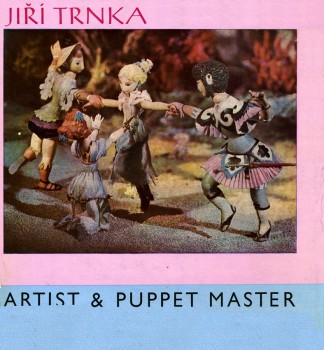 Let’s start with one of my favorite books. It’s no secret that I not only love puppets, but love animated puppet films. Far and above all the others, I find Jiri Trnka among the finest masters in animation and animation history. He took the animation puppet form and pushed it to new heights.
Let’s start with one of my favorite books. It’s no secret that I not only love puppets, but love animated puppet films. Far and above all the others, I find Jiri Trnka among the finest masters in animation and animation history. He took the animation puppet form and pushed it to new heights.
There are several books on Trnka’s work. I have three books and two folio publications on this artist. Jiri Trnka, Artist and Puppet Master by Jarolslav Bocek is an excellent book that was initally published in 1963 and in English in 1965. Because of the early date, several of his most important films aren’t included; specifically The Hand and The Archangel Gabriel and Mother Goose. Both were enormous films that had an enormous effect on animation puppet filmmaking.
However, this book focuses on his feature, Midsummer’s Night Dream (pictured on the book’s cover) and includes many excellent images from that film. In fact, there are quite a few illustrations in the book from many of Trnka’s films and illustrations. The book’s text is spare but quite effective in illustrating many of the important points in the life and work of this artist. It’s the illustrations that make this book a gem.
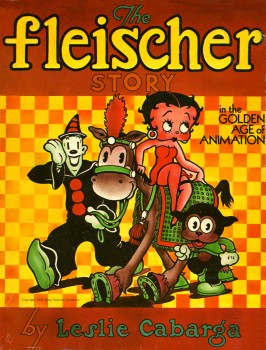 Another book that is made by its illustrations is Leslie Carbaga‘s book, The Fleischer Story. It’s an odd scrapbook of a biography of the Fleischers. Originally published in 1976 this book revealed a lot of information about the New York studio. It took them through the silent days right into the Florida studio and gets a bit odd about the final days of the studio.
Another book that is made by its illustrations is Leslie Carbaga‘s book, The Fleischer Story. It’s an odd scrapbook of a biography of the Fleischers. Originally published in 1976 this book revealed a lot of information about the New York studio. It took them through the silent days right into the Florida studio and gets a bit odd about the final days of the studio.
There is a large grab bag of black and white illustrations which show off a lot of the behind-the-scenes material the studio created in making their shorts. Model sheets, animation drawings, patent sketches, copies of the Fleischer Studio News in-house organ, and hi contrast photos are all pasted together in an unusual arrangement.
It really does feel a bit like a scrapbook of the studio, and it all serves to give you a lot of original material in the pre-internet days. Oddly, I can easily imagine this book as a website.
The original book didn’t quite deal with the whys and hows of the breakup, but by mailing to Carbaga he sent an amended letter to the chapter revealing information that he couldn’t tell until Dave Fleischer died. I’m not sure if the more recent copies of the book have been adjusted to include this gossipy information.
The Walter Lantz Story by Joe Adamson is an interesting little book not least because of 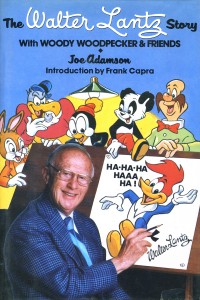 the odd introduction by Frank Capra. The book, like Lantz’ films, has a relaxed way of telling its story. In an almost casual manner, Adamson reveals the history of this animation pioneer.
the odd introduction by Frank Capra. The book, like Lantz’ films, has a relaxed way of telling its story. In an almost casual manner, Adamson reveals the history of this animation pioneer.
When I originally read it, I was surprised by the hard-core nuts and bolts that were revealed about the finances of the Lantz films. It was particularly interesting to me as an independent producer of animation. Somehow realizing that another of the established animation producers had suffered through difficult financial problems seemed somehow soothing. It’s a difficult game, and it’s always comforting to hear of others’ problems. In some way, they feel shared. I read this book as I went through a difficult patch, and it felt like every chapter of the book ended with more financial problems the Lantz studio was pushing through in their history.
Of course, a lot of important names are dropped in the Lantz history. Bill Nolan, Shamus Culhane, Tex Avery, Dick Lundy and LaVerne Harding all play an important part of the history. The book was obviously authorized by Walter and Gracie Lantz and almost feels as if they stood over Adamson’s shoulder as he wrote it.
It was also interesting back in 1985 to clear up some of the difficulties that spread through animation studios as one studio robbed from another both characters and personnel. I enjoyed seeing it sorted out, and this was one of the first to help clear the air of the Oswald the Rabbit theft and how the different bodies landed in the different studios. Today, of course, a reading of Michael Barrier‘s Hollywood Cartoons makes the history evident and clear. Except for some of the nitty gritty financial details and meticulous information about the Lantz studio, this book is almost superfluous now. In some ways it’s similar to the autobiographical tome by Bill Hanna. Just the same I not only enjoyed it but felt a strong connection to it.
- Of course, if you’re talking about animation biographies, you can’t omit the mass of titles of books by John Canemaker. Here are just a few that impress:
Before the Animation Begins: The Art and Lives of Disney Inspirational Sketch Artists This is one of my favorites of John’s books. Obviously, my heart is in design and his focus is on some key designers throughout the history of Disney animation. I just wish there were a sequel to this so that some more names could be revealed and analyzed.
Tex Avery: The Mgm Years, 1942-1955 There’s a wonderful French volume by Patrick Brion with the same title Tex Avery that is just beautifully produced with animation art on vellum and printed in color to highlight color pencil. Canemaker’s book isn’t quite up to this, but it’s wonderful on its own right giving complete attention to the MGM years of Avery’s work. The difference between the two copies I own, is that Canemaker’s book is in English, and I can understand it.
Walt Disney’s Nine Old Men and the Art of Animation gives the biographies of all nine animators Disney called his “Nine Old Men.” It’s amazing how much attention and photographic detail it gives to nine markedly dissimilar individuals.
Felix: The Twisted Tale of the World’s Most Famous Cat is by far the only real biography of the cat. In fact, it’s really more a biography of Otto Messmer, the quiet artist who drew most of the silent shorts for Pat Sullivan.
Winsor McCay : His Life and Art is the crème de la crème of Canemaker’s work. This book unveils all the material in this pantheon of cartoon creators. It’s an absolute must for all animation and comic strip lovers.
Animation Artifacts &Hubley &Story & Storyboards 28 Feb 2007 08:04 am
Hub Boards
- The conversation on storyboard use goes way back – before the internet. If you check out the 1969 book by John Halas, Techniques of Film Animation, there’s a Q&A session wherein a number of animation greats were asked several questions, and the answers are given by question.
Here’s one question about storyboards and the answers given:
To what extent to you think a storyboard should be developed prior to production?
- GENE DEITCH: I believe in complete scene and shot breakdown in story-board or a thumbnail board form before production begins. I use a thumbnail storyboard as a sort of bar-sheet, indicating all effects, dialogue and music cues, scene transitions, etc. Great savings in cost, and an overall perspective of the film in advance are to be gained.
JOY BATCHELOR : As fully as possible without detriment to the following phases of production.
STEHPEN BOSUSTOW: If time and money allow, the storyboard should include as many details as possible, particularly if it is to be assigned to a large production unit. However, if only a few people are to be working on the picture, the storyboard can be quite sketchy, with the details being developed during production by the key people who have an overall feeling for and knowledge of the story.
ADRIAN WOOLERY: The storyboard is the first step, after the idea. Every problem must be solved and the story completely resolved on the board prior to consideration of any production.
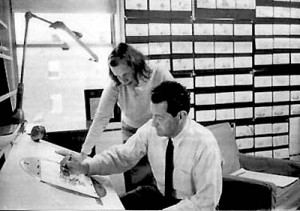 JOHN HUBLEY: It has been my experience that the more detailed a story-board and the more carefully it is designed to reflect the appearance of the finished production, the more successful the film.
JOHN HUBLEY: It has been my experience that the more detailed a story-board and the more carefully it is designed to reflect the appearance of the finished production, the more successful the film.GEOFFREY SUMNER: The storyboard, or breakdown of the film, has as many different forms as there are ways of putting actions in relation to one another.
The classic storyboard is the set of working drawings of the sequence of a film used in large studios on the Disney model where numbers of subsidiary workers must conform to a total pattern they can almost never see.
It is used in conjunction with model sheets. It could be called the “model sheet” of the sequence of the film.
It is strictly for use within a studio and should not be shown to dangerous people like sponsors.
An earlier stage is the treatment, which can be specifically directed at sponsors. If the basic idea of the film is simple, the treatment need be no more than half a dozen drawings and a brief synopsis to convey a ten minute film.
A storyboard must necessarily be constructed after the music has been done. The musician and the director can work together from a stage following the treatment. From the finished recorded track the storyboard is made.
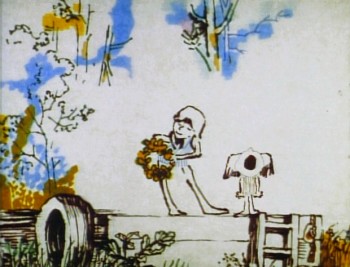 For years prior to even meeting Hubley, I had remembered his response to this question. It impressed me. His storyboard development was pretty intense. The scripts generally were done visually and tacked to the wall.
For years prior to even meeting Hubley, I had remembered his response to this question. It impressed me. His storyboard development was pretty intense. The scripts generally were done visually and tacked to the wall.
I don’t remember ever seeing text up there. John would present the board to key people, and he would give an indication of dialogue verbally. We all knew this would ultimately be ad-libbed by actors.
With the Carousel feature, sections were boarded but then developed in greater  length through improvised sessions. The boards then grew out of the edited tracks. The voices often came first, here.
length through improvised sessions. The boards then grew out of the edited tracks. The voices often came first, here.
I suspect this is probably also true of the films like Cockaboody, Windy Day and Moonbird which were dependent on the children’s verbal play at the microphone. Something like The Hole or Voyage To Next were boarded visually, then recorded improv sessions which were adapted in newer boards.
Of course it has to be remembered that the two features done within this studio, Everybody Rides The Carousel and Of Stars and Men, both started out as text. Both were heavy-duty books that were adapted for film. In the case of Of Stars and Men, the author, mathematician Harlow Shapely had major involvement in the film’s script and narrated it as well. The concepts for both films were fully worked out before anyone started boarding. So essentially a script – of sorts – existed. Since CBS financed Everybody Rides The Carousel, you know they had to approve a script.
I, of course, only remember the board.
